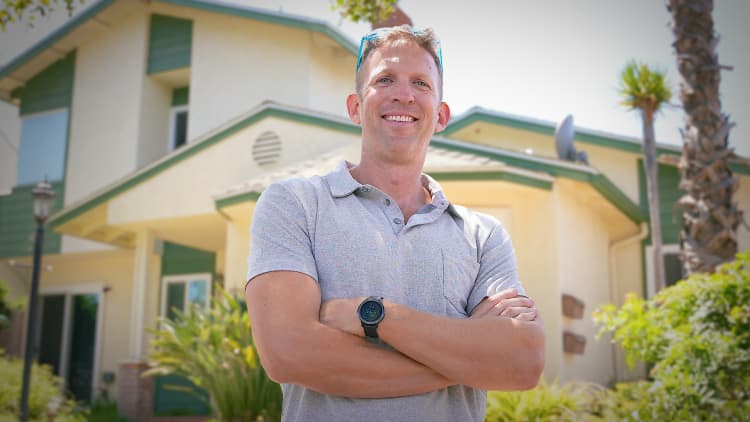On average, American workers think they'll need $1.7 million saved for retirement, but a little less than half believe they're likely to meet their savings goals, according to a recent Charles Schwab study.
That's understandable: Financial planners typically recommend saving between 10% and 15% of your gross annual salary for retirement, which is no small feat.
But if you're not able to save that much yet, don't panic. Workers with employer-sponsored retirement plans only contribute around 7% of their income toward their retirement fund on average, according to Vanguard's "How America Saves 2022" report.
With this in mind, CNBC calculated how much you'd need to put away to save $1.7 million by 65, as well as how much you'd need to earn to accomplish this without saving more than 15% of your income.
Although these calculations can give you an idea of what you should be saving to reach a retirement savings goal of $1.7 million, they don't account for various factors outside of your control, such as market volatility, unexpected life events, pay increases, periods of unemployment or the interest you'll earn on your savings.
Here's how much you need to put away each month to save $1.7 million by 65.
If you start at age 25
Earning a 4% annual rate of return: $1,433.51 per month
- Annual salary needed if you save 10% of your income: $172,021
- Annual salary needed if you save 15% of your income: $114,686
Earning a 6% annual rate of return: $853.63 per month
- Annual salary needed if you save 10% of your income: $102,436
- Annual salary needed if you save 15% of your income: $68,294
Earning an 8% annual rate of return: $486.97 per month
- Annual salary needed if you save 10% of your income: $58,436
- Annual salary needed if you save 15% of your income: $38,959
If you start at age 30
Earning a 4% annual rate of return: $1,860.50 per month
- Annual salary needed if you save 10% of your income: $223,260
- Annual salary needed if you save 15% of your income: $148,848
Earning a 6% annual rate of return: $1,193.23 per month
- Annual salary needed if you save 10% of your income: $143,187
- Annual salary needed if you save 15% of your income: $95,463
Earning an 8% annual rate of return: $741.10 per month
- Annual salary needed if you save 10% of your income: $88,932
- Annual salary needed if you save 15% of your income: $59,291
If you start at age 40
Earning a 4% annual rate of return: $3,306.56 per month
- Annual salary needed if you save 10% of your income: $396,787
- Annual salary needed if you save 15% of your income: $264,538
Earning a 6% annual rate of return: $2,453.12 per month
- Annual salary needed if you save 10% of your income: $294,375
- Annual salary needed if you save 15% of your income: $196,260
Earning an 8% annual rate of return: $1,787.54 per month
- Annual salary needed if you save 10% of your income: $214,505
- Annual salary needed if you save 15% of your income: $143,010
As the calculations show, the sooner you begin saving for retirement, the less you'll have to save per month, since your money will have more time to compound.
In fact, one of the top mistakes people make when it comes to retirement planning is not starting early enough and not increasing their contributions over time, says Nathan Voris, director of investments, insights and consultant services for Schwab Retirement Plan Services.
"You don't have to start out with a bang," says Voris. "Even if you're starting small, that gets you engaged and then you can bump it up each year."
To that point, it's smart for workers in their 20s and 30s to take advantage of opportunities like an employer-sponsored 401(k) match if it's available, says Joe Duran, co-head of Goldman Sachs' personal financial management group.
For workers in their 40s, Duran recommends working with a financial advisor to discuss your retirement goals and priorities. "This will help you build a holistic financial plan to create a meaningful retirement for you," he says.
Sign up now: Get smarter about your money and career with our weekly newsletter
Don't miss: You need about $2 million to retire comfortably in Hawaii—here are the 6 other most expensive states



